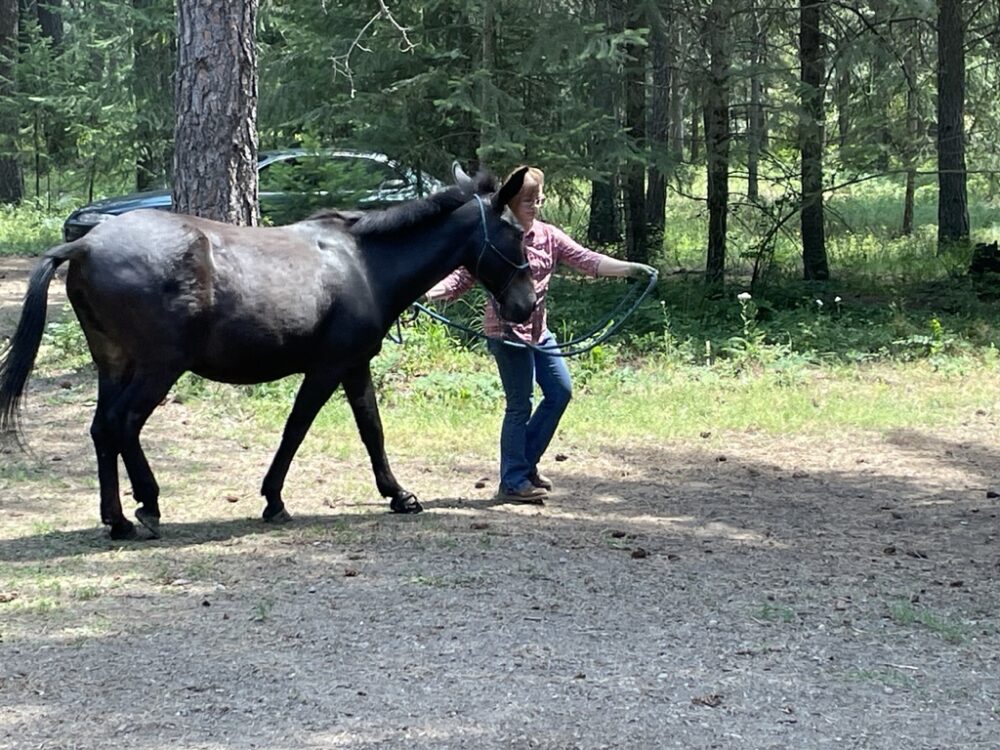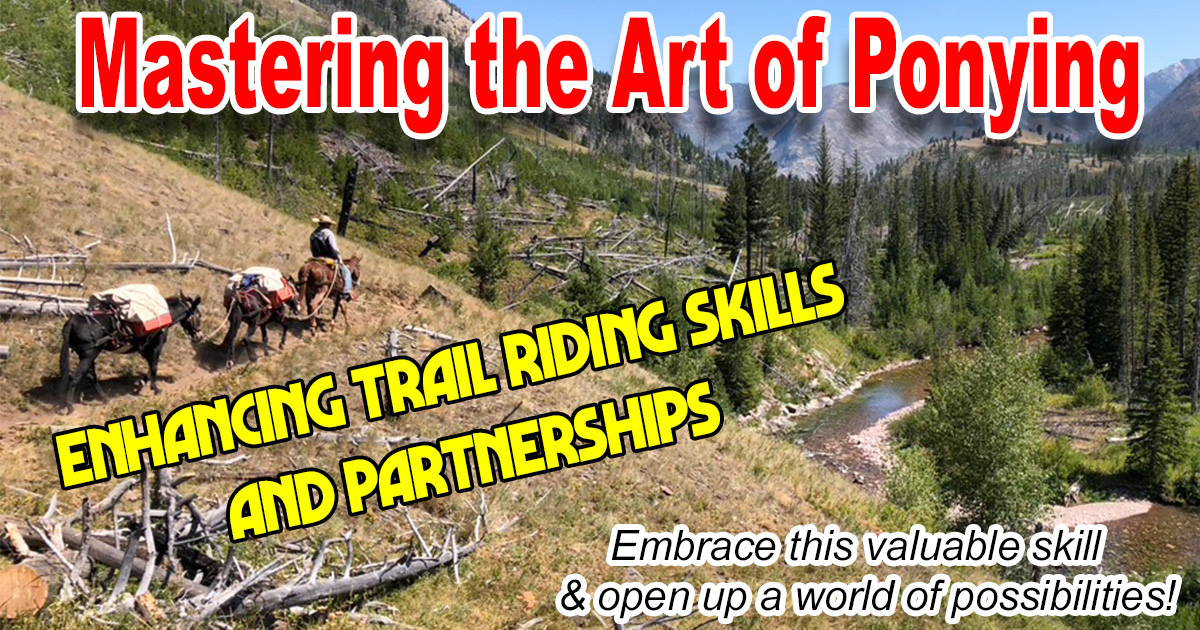Let’s talk about the skill of ponying and why every horse rider should be able to do it. Have you ever led another horse from yours? And is your horse comfortable being led by another horse? If not, it’s time to change that! Ponying isn’t just for packers; it’s essential for all trail riders.
Ponying is simply the act of leading a horse from the one you’re riding. It may sound straightforward, but it’s a multitasking job that requires riding your horse while observing the other horse. Picture yourself holding the reins in one hand and a lead rope in the other, all while maintaining balance and control.
Now, why would anyone want to pony? Let me give you a few reasons:
Firstly, ponying allows you to introduce a new horse to the trail. It’s a great way to build their confidence while providing guidance and reassurance.
Secondly, ponying a pack horse behind your riding horse can be a game-changer when you need extra supplies or equipment on the trail or in camp. You’ll significantly increase your carrying capacity and make your adventures more convenient.
Additionally, ponying can be helpful when you need to assist another rider. Imagine being able to lend a helping hand to a fellow rider who may be having difficulties. It’s a fantastic way to support each other on the trail.
Last but not least, ponying is an excellent training tool for conditioning both young and older horses. It helps them build strength, stamina, and mental agility. It’s like hitting two birds with one stone: you can exercise your riding horse while providing valuable training to the ponied horse.
But here’s the catch: ponying requires proper knowledge and technique to keep everyone safe. Let’s go over some essential points:
First, you need to prepare yourself. Get comfortable riding one-handed, and practice rein control with both hands while holding a lead rope. Switching hands smoothly from one side to the other should become second nature to you.
Next, prepare your riding horse. Before attempting to lead another horse:
1. Make sure your horse is comfortable with having a rope around them.
2. Start by introducing the lead rope to different parts of their body—neck, hips, legs, etc.
Of course, the horse you plan to lead also needs preparation. Begin with groundwork before attempting to lead it from horseback. Ensure it has excellent ground manners, responds well to cues, and remains light and attentive on the lead rope. Work on these exercises until your horse consistently performs well, even from a distance. This groundwork prepares them for ponying and improves their overall behavior and respectfulness as your partner.

Regarding equipment, ensure you have a functional saddle with a solid tree. Flexible tree saddles or treeless saddles can cause discomfort and uneven pressure distribution, leading to problems for your horse. Use a rope halter for the horse being led, as it effectively reinforces your cues. A 12-foot lead rope usually works best, allowing sufficient distance between the horses. And remember to protect your hands with gloves to avoid rope burn.
Here’s an important tip: avoid tying your lead rope to the saddle horn. Instead, use the horn for holding items like lunch. In the event of any unexpected situations, while ponying, such as the ponied horse losing its footing, you want to be able to release all connections instantly. It’s much safer to dismount and pick up the lead rope than to be tied to an unstable animal and risk being dragged off the side of a mountain.
Remember, successful ponying depends on the groundwork, response, and respect you establish with your horse on the ground. If your horse behaves well and responds to cues when handled on a halter rope from the ground, these qualities will shine through when you pony them. Take the time to develop these skills, as they are essential for safe and effective ponying.
So, are you ready to take on the art of ponying? Embrace this valuable skill and open up a world of possibilities on the trail!
To learn more about ponying, check out Chapter “P” in The ABCs of Trail Riding and Horse Camping. For more information on trail riding and camping with horses, check out www.TrailMeister.com. It’s an excellent resource for all things related to horseback adventures.


